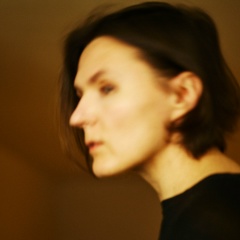Вход в Запретный город.
"... никто не мог войти во дворец или покинуть его без разрешения императора. Запретный город в самом сердце Пекина был отрезан от остального города рвами и пурпурно-красными стенами; только император и его приближенные имели право здесь находиться, а для простого люда эта часть Пекина была недоступна. Ещё в XIX веке иностранцы почти никогда там не бывали ...
Это самый обширный дворцовый комплекс в мире, главный дворцовый комплекс китайских императоров начиная с династии Мин и до конца династии Цин, то есть с 1420 по 1912 годы; на протяжении всего этого времени служил как местом жительства императоров и членов их семей, так и церемониальным и политическим центром китайского правительства. Отсюда Поднебесной правили 24 императора династий Мин и Цин."
"... никто не мог войти во дворец или покинуть его без разрешения императора. Запретный город в самом сердце Пекина был отрезан от остального города рвами и пурпурно-красными стенами; только император и его приближенные имели право здесь находиться, а для простого люда эта часть Пекина была недоступна. Ещё в XIX веке иностранцы почти никогда там не бывали ...
Это самый обширный дворцовый комплекс в мире, главный дворцовый комплекс китайских императоров начиная с династии Мин и до конца династии Цин, то есть с 1420 по 1912 годы; на протяжении всего этого времени служил как местом жительства императоров и членов их семей, так и церемониальным и политическим центром китайского правительства. Отсюда Поднебесной правили 24 императора династий Мин и Цин."
Entrance to the Forbidden City.
"... no one could enter the palace or leave it without the permission of the emperor. The forbidden city in the heart of Beijing was cut off from the rest of the city by moats and purple-red walls; only the emperor and his entourage had the right to be here, and for the common people this part of Beijing was inaccessible.In the 19th century, foreigners almost never visited it ...
It is the largest palace complex in the world, the main palace complex of Chinese emperors from the Ming Dynasty to the end of the Qing Dynasty, that is, from 1420 to 1912; Throughout this time, it served as the residence of the emperors and their family members, as well as the ceremonial and political center of the Chinese government. From here, the Celestial Empire was ruled by 24 emperors of the Ming and Qing dynasties. "
"... no one could enter the palace or leave it without the permission of the emperor. The forbidden city in the heart of Beijing was cut off from the rest of the city by moats and purple-red walls; only the emperor and his entourage had the right to be here, and for the common people this part of Beijing was inaccessible.In the 19th century, foreigners almost never visited it ...
It is the largest palace complex in the world, the main palace complex of Chinese emperors from the Ming Dynasty to the end of the Qing Dynasty, that is, from 1420 to 1912; Throughout this time, it served as the residence of the emperors and their family members, as well as the ceremonial and political center of the Chinese government. From here, the Celestial Empire was ruled by 24 emperors of the Ming and Qing dynasties. "

У записи 3 лайков,
0 репостов,
150 просмотров.
0 репостов,
150 просмотров.
Эту запись оставил(а) на своей стене Михаил Малышев
























